Optical Analog to Electromagnetically Induced Transparency in Cascaded Ring-Resonator Systems
Abstract
:1. Introduction
2. Structural Design
3. Device Fabrication and the Experiment
4. Conclusions
Acknowledgments
Author Contributions
Conflicts of Interest
References
- Boller, K.J.; Imamoglu, A.; Harris, S.E. Observation of electromagnetically induced transparency. Phys. Rev. Lett. 1991, 66, 2593–2596. [Google Scholar]
- Hau, L.V.; Harris, S.E.; Dutton, Z.; Behroozi, C.H. Light speed reduction to 17 metres per second in an ultracold atomic gas. Nature 1999, 397, 594–598. [Google Scholar] [CrossRef]
- Safavi-Naeini, A.H.; Alegre, T.P.M.; Chan, J.; Eichenfield, M.; Winger, M.; Hill, J.T.; Lin, Q.; Chang, D.; Painter, O. Electromagnetically induced transparency and slow light with optomechanics. Nature 2011, 472, 69–73. [Google Scholar] [PubMed]
- Longdell, J.J.; Fraval, E.; Sellars, M.J.; Sellars, M.J.; Manson, N.B. Stopped light with storage times greater than one second using electromagnetically induced transparency in a solid. Phys. Rev. Lett. 2005, 95, 063601. [Google Scholar]
- Lukin, M.D.; Imamoğlu, A. Controlling photons using electromagnetically induced transparency. Nature 2001, 413, 273–276. [Google Scholar]
- Liu, N.; Weiss, T.; Mesch, M.; Langguth, L.; Eigenthaler, U.; Hirscher, M.; Sönnichsen, C.; Giessen, H. Planar Metamaterial Analogue of Electromagnetically Induced Transparency for Plasmonic Sensing. Nano Lett. 2009, 10, 1103–1107. [Google Scholar]
- Smith, D.D.; Chang, H.; Fuller, K.A.; Rosenberger, A.T.; Boyd, R.W. Coupled-resonator-induced transparency. Phys. Rev. A 2004, 69, 063804. [Google Scholar]
- Xu, Q.; Sandhu, S.; Povinelli, M.L.; Shakya, J.; Fan, S.; Lipson, M. Experimental realization of an on-chip all-optical analogue to electromagnetically induced transparency. Phys. Rev. Lett. 2006, 96, 123901. [Google Scholar]
- Heebner, J.E.; Boyd, R.W.; Park, Q.H. Slow light, induced dispersion, enhanced nonlinearity, and optical solitons in a resonator-array waveguide. Phys. Rev. E 2002, 65, 036619. [Google Scholar]
- Singh, R.; Cao, W.; Al-Naib, I.; Cong, L.; Withayachumnankul, W.; Zhang, W. Ultrasensitive terahertz sensing with high-Q Fano resonances in metasurfaces. Appl. Phys. Lett. 2014, 105, 171101. [Google Scholar]
- Manjappa, M.; Chiam, S.Y.; Cong, L.; Bettiol, A.A.; Zhang, W.; Singh, R. Tailoring the slow light behavior in terahertz metasurfaces. Appl. Phys. Lett. 2015, 106, 181101. [Google Scholar]
- Pitchappa, P.; Manjappa, M.; Ho, C.P.; Singh, R.; Singh, N.; Lee, C. Active Control of Electromagnetically Induced Transparency Analog in Terahertz MEMS Metamaterial. Adv. Opt. Mater. 2016, 4, 541–547. [Google Scholar]
- Zhang, S.; Genov, D.A.; Wang, Y.; Liu, M.; Zhang, X. Plasmon-induced transparency in metamaterials. Phys. Rev. Lett. 2008, 101, 047401. [Google Scholar]
- Cao, W.; Singh, R.; Zhang, C.; Han, J.; Tonouchi, M.; Zhang, W. Plasmon-induced transparency in metamaterials: Active near field coupling between bright superconducting and dark metallic mode resonators. Appl. Phys. Lett. 2013, 103, 101106. [Google Scholar] [CrossRef]
- Cao, W.; Singh, R.; Al-Naib, I.A.; He, M.; Taylor, A.J.; Zhang, W. Low-loss ultra-high-Q dark mode plasmonic Fano metamaterials. Opt. Lett. 2012, 37, 3366–3368. [Google Scholar] [PubMed]
- Steinberg, B.Z.; Scheuer, J.; Boag, A. Rotation-induced superstructure in slow-light waveguides with mode-degeneracy: Optical gyroscopes with exponential sensitivity. J. Opt. Soc. Am. B 2007, 24, 1216–1224. [Google Scholar]
- Zhang, Y.; Wang, N.; Tian, H.; Wang, H.; Qiu, W.; Wang, J.; Yuan, P. A high sensitivity optical gyroscope based on slow light in coupled-resonator-induced transparency. Phys. Rev. A 2008, 372, 5848–5852. [Google Scholar]
- Heebner, J.E.; Wong, V.; Schweinsberg, A.; Boyd, R.W.; Jackson, D.J. Optical transmission characteristics of fiber ring resonators. IEEE J. Quantum Electron. 2004, 40, 726–730. [Google Scholar]
- Scheuer, J.; Paloczi, G.T.; Poon, J.K.S.; Yariv, A. Coupled resonator optical waveguides: toward the slowing and storage of light. Opt. Photonics News 2005, 16, 36–40. [Google Scholar]
- Smith, D.D.; Lepeshkin, N.N.; Schweinsberg, A.; Gehring, G.; Boyd, R.W.; Park, Q.H.; Chang, H.; Jackson, D.J. Coupled-resonator-induced transparency in a fiber system. Opt. Commun. 2005, 264, 163–168. [Google Scholar]
- Kouki, T.; Norihiko, K.; Makoto, T. Slow light in coupled-resonator-induced transparency. Phys. Rev. Lett. 2007, 98, 213904. [Google Scholar]
- Ke, D.; Changde, X.; Jing, Z. Coupled-resonator-induced transparency with a squeezed vacuum. Phys. Rev. Lett. 2011, 106, 1486–1503. [Google Scholar]
- Yang, X.; Yu, M.; Kwong, D.L.; Wong, C.W. All-optical analog to electromagnetically induced transparency in multiple coupled photonic crystal cavities. Phys. Rev. Lett. 2009, 102, 173902. [Google Scholar]
- Yang, X.; Yu, M.; Kwong, D.L.; Wong, C.W. Coupled resonances in multiple silicon photonic crystal cavities in all-optical solid-state analogy to electromagnetically induced transparency. IEEE J. Sel. Top. Quantum Electron. 2010, 16, 288–294. [Google Scholar]
- Xu, Q.; Dong, P.; Lipson, M. Breaking the delay-bandwidth limit in a photonic structure. Nat. Phys. 2007, 3, 406–410. [Google Scholar]
- Yu, X.; Ma, H.; Jin, Z.; Pan, M.; Hou, L.; Xie, W. Sensitive birefringent temperature sensor based on a waveguide ring resonator. Appl. Opt. 2014, 53, 2748–2753. [Google Scholar] [PubMed]
- Lee, H.S.; Park, C.H.; Lee, S.S.; Lim, B.T.; Bae, H.K.; Lee, W.G. Silicon photonic temperature sensor employing a ring resonator manufactured using a standard CMOS process. Opt. Express 2010, 18, 22215–22221. [Google Scholar]
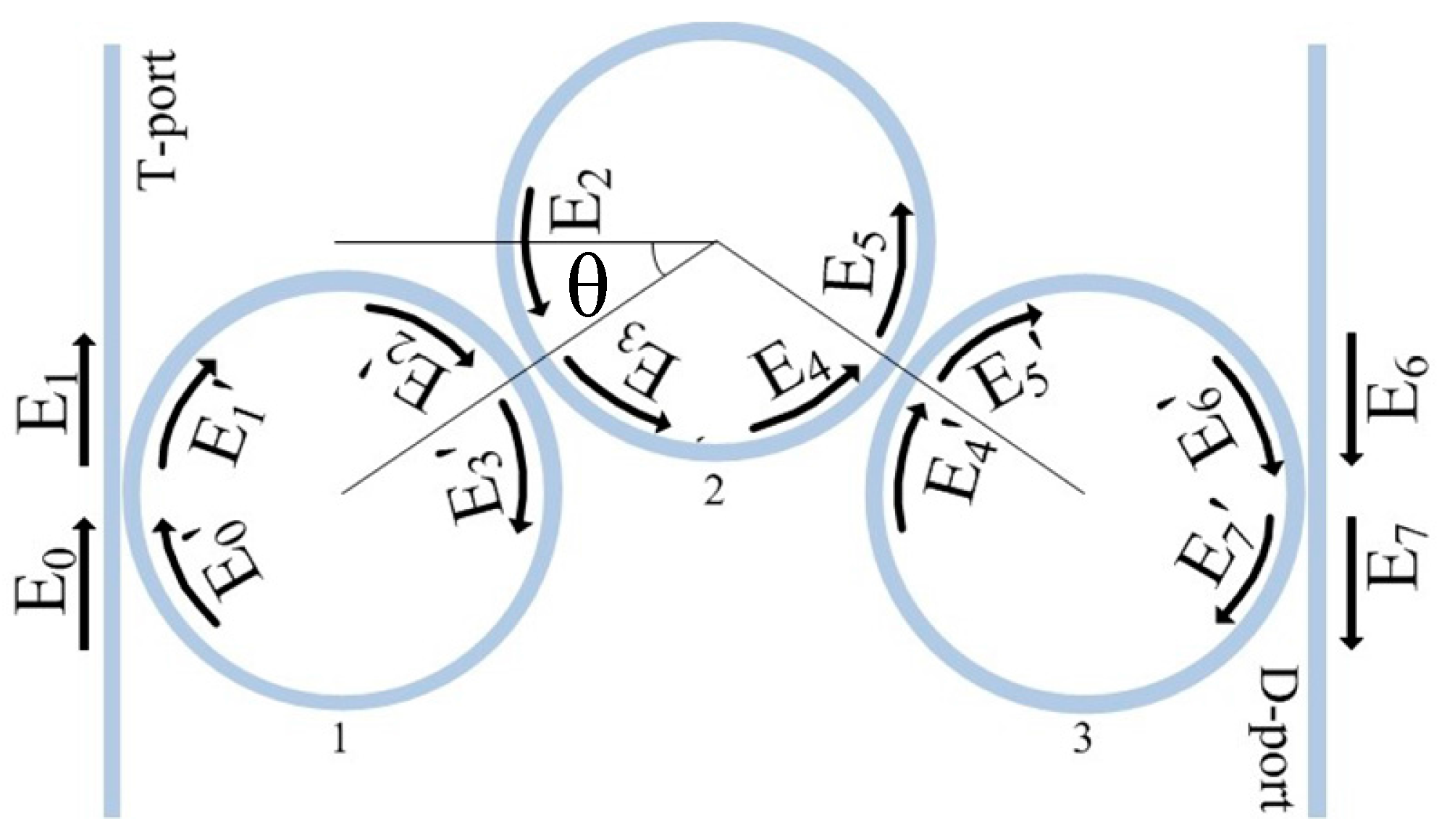
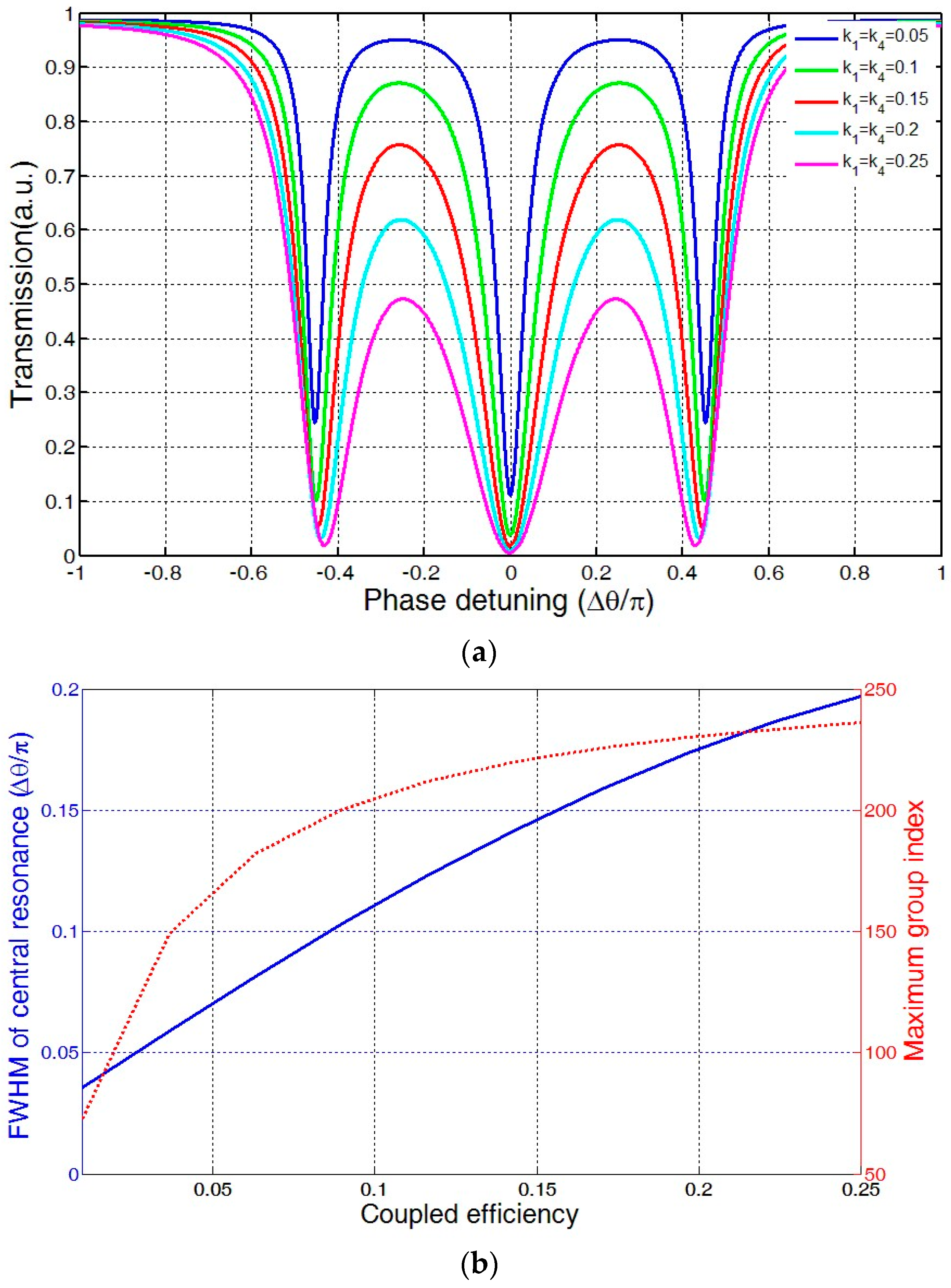
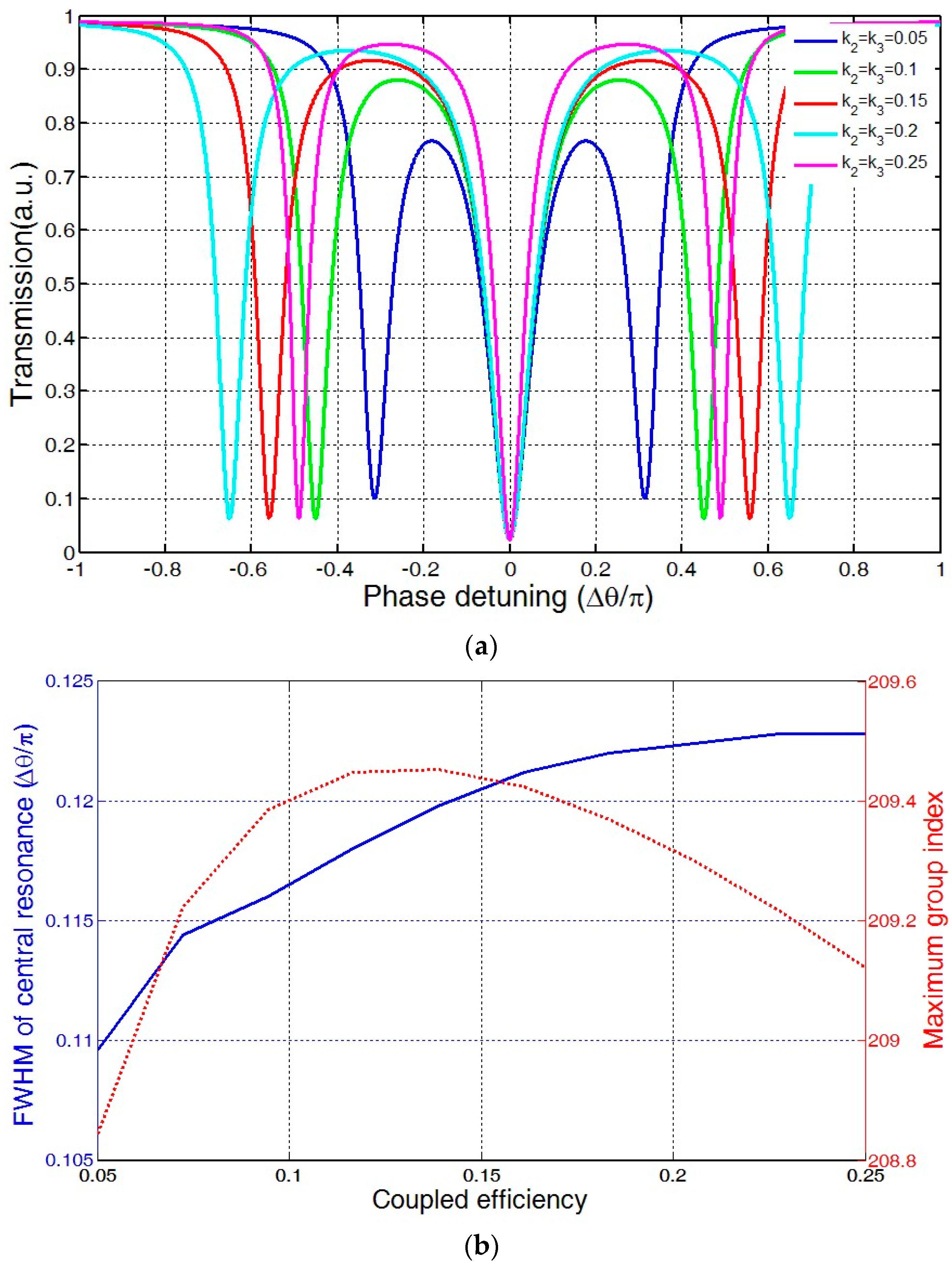
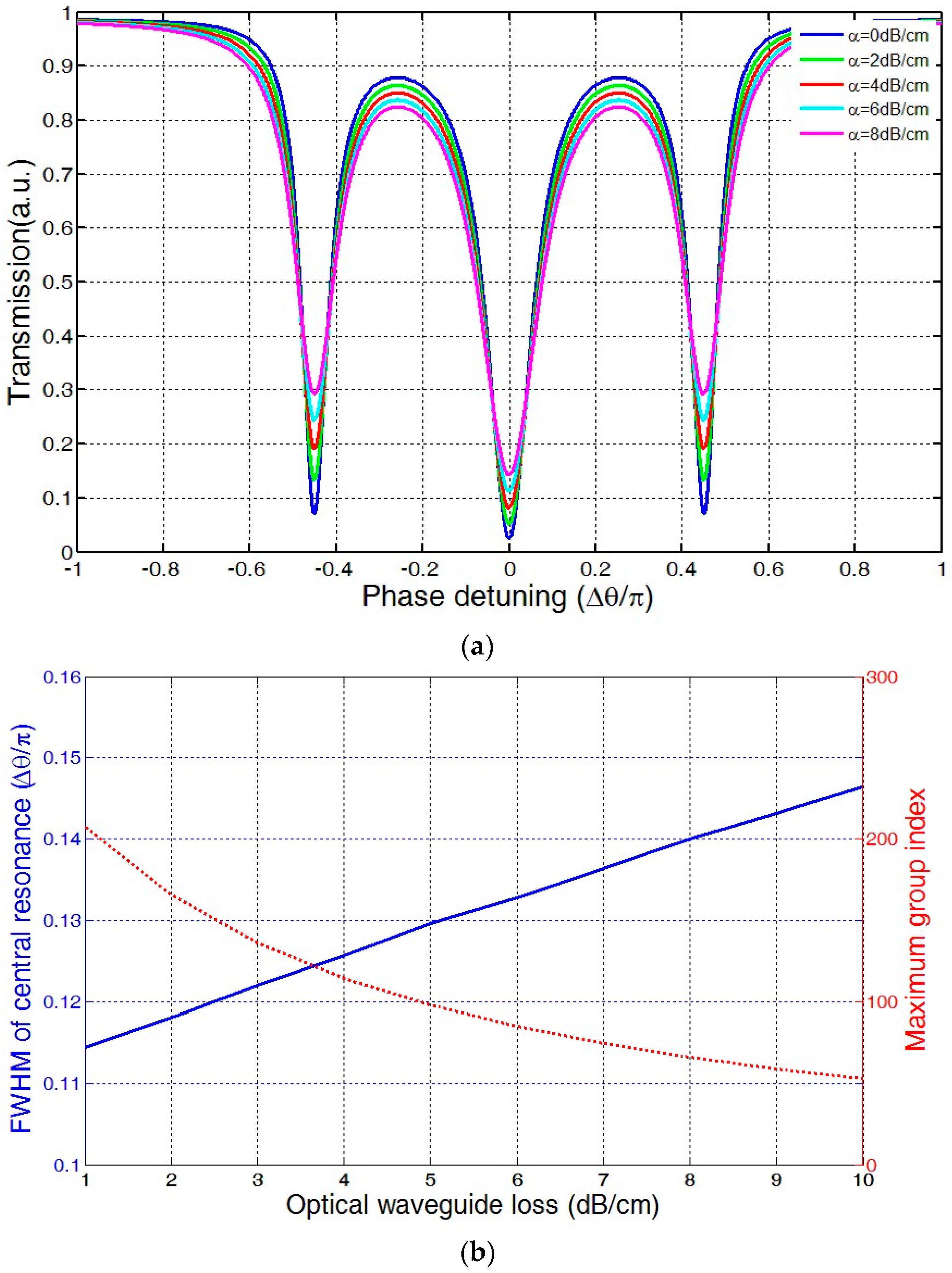
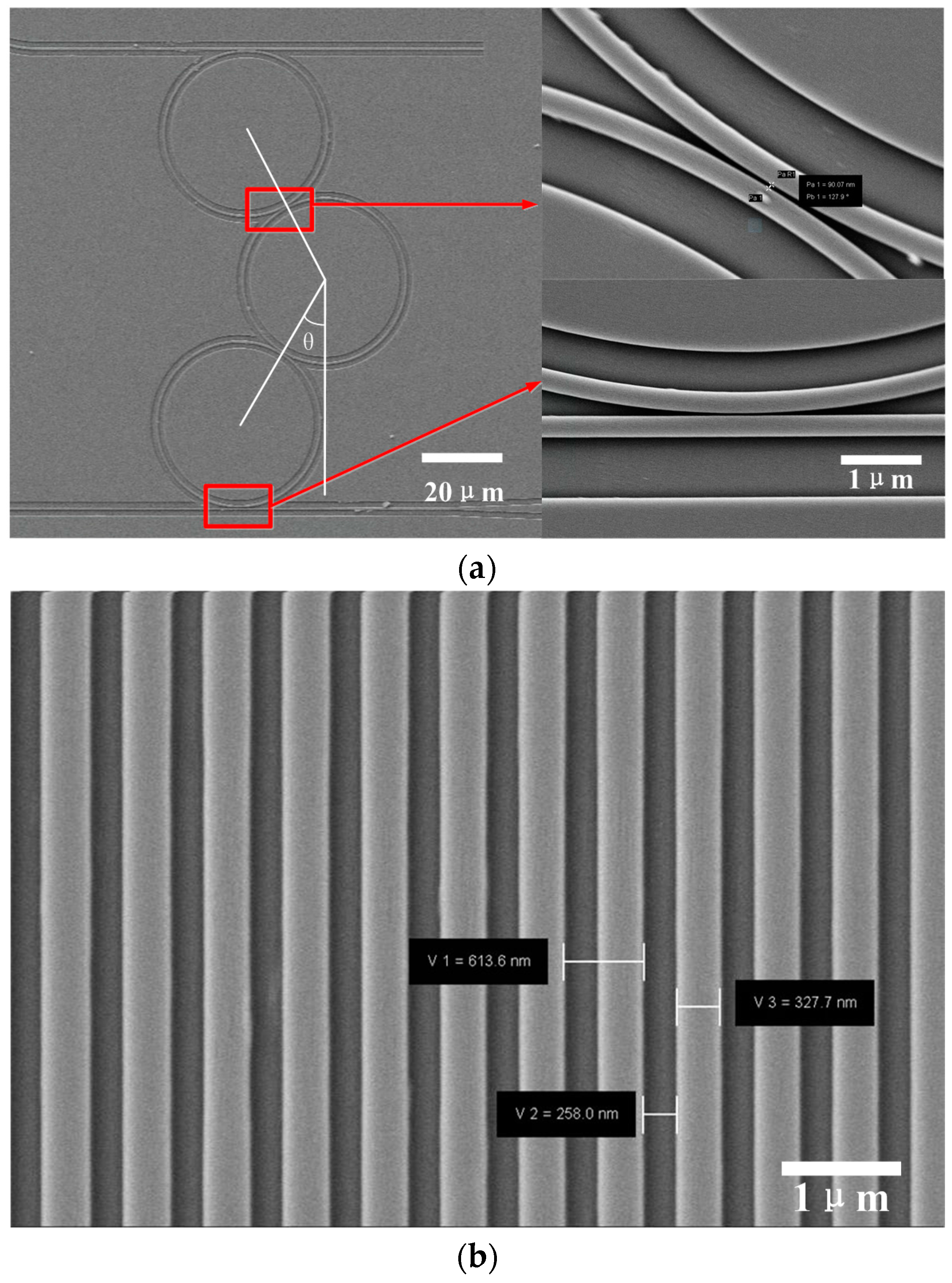
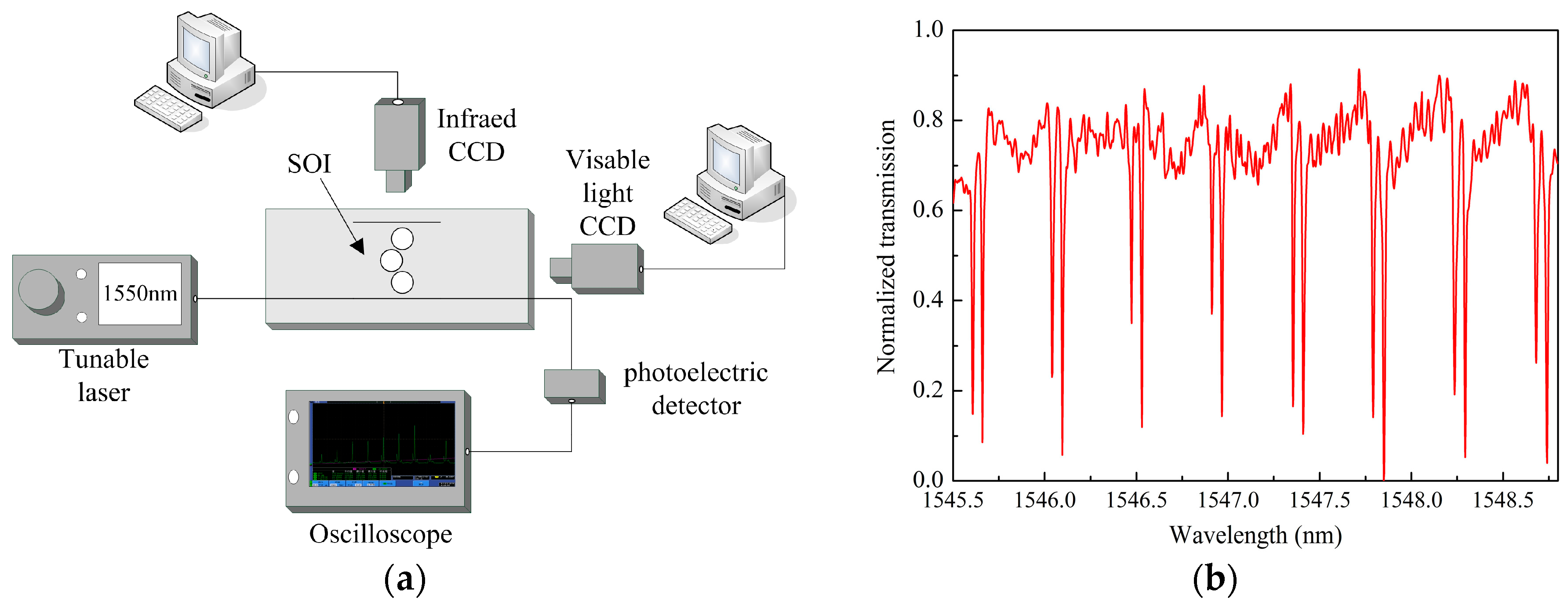
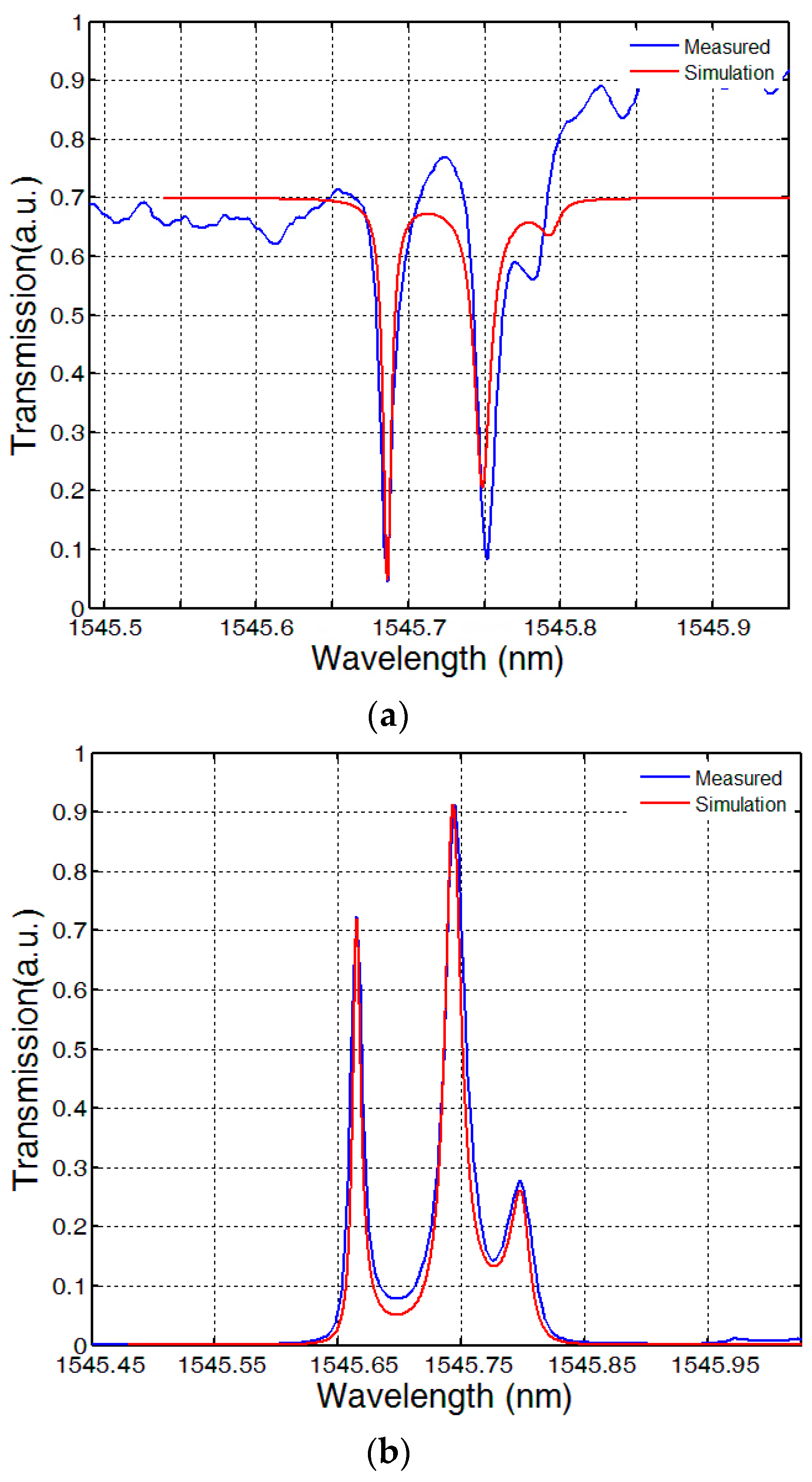

© 2016 by the authors; licensee MDPI, Basel, Switzerland. This article is an open access article distributed under the terms and conditions of the Creative Commons Attribution (CC-BY) license (http://creativecommons.org/licenses/by/4.0/).
Share and Cite
Wang, Y.; Zheng, H.; Xue, C.; Zhang, W. Optical Analog to Electromagnetically Induced Transparency in Cascaded Ring-Resonator Systems. Sensors 2016, 16, 1165. https://doi.org/10.3390/s16081165
Wang Y, Zheng H, Xue C, Zhang W. Optical Analog to Electromagnetically Induced Transparency in Cascaded Ring-Resonator Systems. Sensors. 2016; 16(8):1165. https://doi.org/10.3390/s16081165
Chicago/Turabian StyleWang, Yonghua, Hua Zheng, Chenyang Xue, and Wendong Zhang. 2016. "Optical Analog to Electromagnetically Induced Transparency in Cascaded Ring-Resonator Systems" Sensors 16, no. 8: 1165. https://doi.org/10.3390/s16081165
APA StyleWang, Y., Zheng, H., Xue, C., & Zhang, W. (2016). Optical Analog to Electromagnetically Induced Transparency in Cascaded Ring-Resonator Systems. Sensors, 16(8), 1165. https://doi.org/10.3390/s16081165






